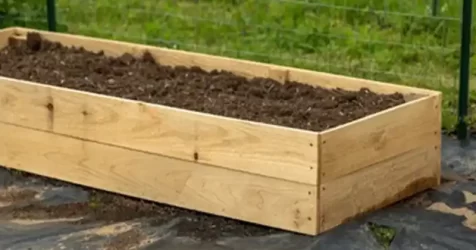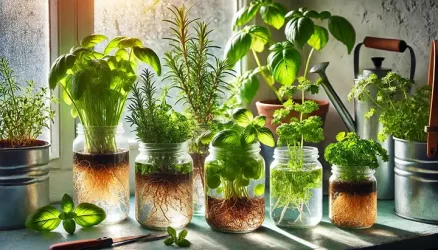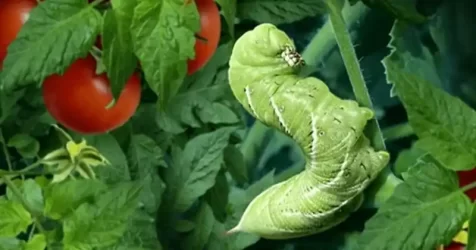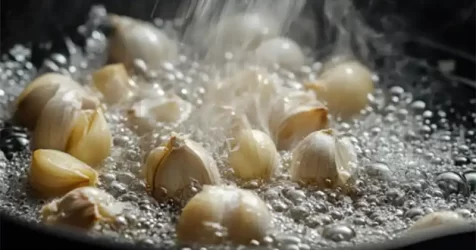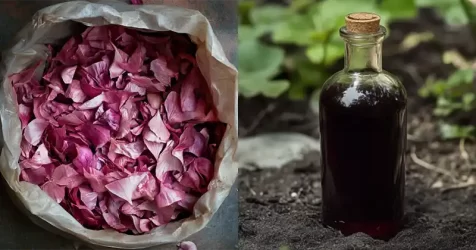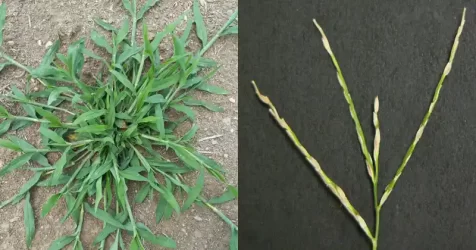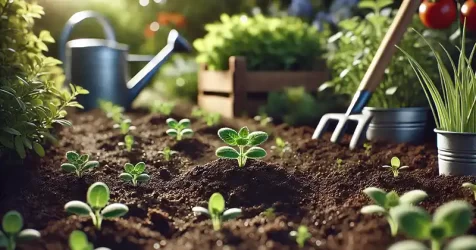10 Most Common Tomato Plant Diseases: Identification, Treatment, and Care

Tomatoes are a staple in many home gardens and agricultural fields, prized for their versatility and delicious flavor. However, tomato plants are susceptible to various diseases that can thwart your efforts to harvest a bountiful crop. To ensure your tomato plants thrive and produce an abundance of healthy tomatoes, it’s essential to be familiar with the most common diseases, know how to identify them early, and understand how to treat and care for your plants. In this article, we’ll highlight the top 10 tomato plant diseases and provide guidance on their identification, treatment, and care.
1. Early Blight
Identification: Early blight typically appears as dark brown or black concentric rings on the lower leaves of tomato plants. As the disease progresses, these spots enlarge and spread.
Treatment: Remove infected leaves, practice crop rotation, and apply copper-based fungicides.
2. Late Blight
Identification: Late blight presents as dark, water-soaked lesions on leaves, often with a white, fuzzy growth on the undersides. It can quickly spread during cool, wet weather.
Treatment: Remove infected leaves, ensure good airflow, and apply copper-based fungicides preventatively.
3. Septoria Leaf Spot
Identification: Septoria leaf spot is characterized by small, circular, brown spots with a lighter center. It primarily affects the lower leaves and can lead to defoliation.
Treatment: Prune affected foliage, mulch to prevent soil splashing, and apply fungicides if necessary.
4. Fusarium Wilt
Identification: Tomato plants infected with Fusarium wilt exhibit yellowing and wilting of leaves, typically on one side of the plant.
Treatment: Unfortunately, there’s no cure for this soil-borne disease. Focus on prevention through resistant tomato varieties and soil sterilization.
5. Verticillium Wilt
Identification: Verticillium wilt causes yellowing and wilting of lower leaves. You may notice brown streaks in the plant’s vascular system when cut.
Treatment: Use resistant tomato varieties and avoid planting in soil known to harbor the pathogen.
6. Blossom End Rot
Identification: Blossom end rot is not caused by a pathogen but rather a calcium deficiency. It appears as brown, sunken areas at the bottom of the fruit.
Treatment: Maintain consistent soil moisture, provide adequate calcium through soil amendments, and avoid over-fertilization.
7. Tomato Mosaic Virus
Identification: Symptoms include mosaic-like yellow and green patterns on leaves and reduced fruit yield.
Treatment: Remove infected plants promptly to prevent the virus from spreading to healthy ones.
8. Bacterial Spot
Identification: Bacterial spot causes small, water-soaked lesions on leaves and fruit that eventually turn dark and raised.
Treatment: Apply copper-based sprays and avoid overhead watering to reduce disease spread.
9. Tomato Yellow Leaf Curl Virus
Identification: Plants infected with this virus display curled, yellowing leaves and stunted growth.
Treatment: Control the whitefly vector population with insecticides and grow resistant tomato varieties.
10. Powdery Mildew
Identification: Powdery mildew appears as white, powdery spots on leaves, stems, and fruit.
Treatment: Remove affected foliage, improve air circulation, and apply fungicides as needed.
General Tomato Plant Care Tips
- Choose Disease-Resistant Varieties: When selecting tomato varieties for your garden, opt for those that are known to be disease-resistant. Many seed catalogs and nursery labels will indicate if a particular variety has resistance to common diseases like blights and wilt. Disease-resistant varieties can significantly reduce the likelihood of infection.
- Practice Crop Rotation: Crop rotation is a vital strategy to prevent soil-borne diseases from building up in the soil over time. Avoid planting tomatoes in the same location year after year. Rotate them with crops from different families to disrupt the life cycles of pathogens in the soil.
- Water at the Base: When watering your tomato plants, aim to water at the base of the plants rather than overhead. Watering at the base helps keep the leaves dry, which reduces the risk of foliar diseases like blights and molds. Drip irrigation or soaker hoses are excellent options for targeted watering.
- Mulch Around Plants: Apply a layer of organic mulch, such as straw or wood chips, around the base of your tomato plants. Mulch helps maintain soil moisture, prevents soil splashing onto the leaves, and regulates soil temperature. This barrier can significantly reduce the risk of soil-borne diseases.
- Prune and Stake Tomatoes: Properly supporting your tomato plants through staking or caging not only keeps the fruits off the ground but also improves airflow around the plants. Prune the lower branches that touch the soil and any excess foliage to promote good air circulation and sunlight penetration. This practice helps reduce humidity, which is favorable for disease development.
- Keep the Garden Clean: Regularly remove fallen leaves, spent plants, and other garden debris, as these can serve as reservoirs for diseases and pests. Proper garden sanitation is essential in preventing the carryover of pathogens from one season to the next.
- Reserve Organic and Chemical Treatments as a Last Resort: While organic and chemical treatments can be effective in managing tomato diseases, they should be considered a last resort. Prioritize preventative measures like proper plant spacing, adequate airflow, and sanitation. If necessary, consult local gardening experts or agricultural extension services for guidance on the safest and most appropriate treatments for your specific situation.
- Soil Preparation: Before planting, conduct a soil test to assess nutrient levels and pH. Tomatoes thrive in slightly acidic soil with a pH of around 6.0 to 6.8. Amend the soil with organic matter like compost or well-rotted manure to improve its structure and fertility. Well-prepared soil provides a strong foundation for healthy plant growth.
- Proper Spacing: When planting tomatoes, ensure adequate spacing between plants. Overcrowding can restrict airflow and promote the spread of diseases. Follow spacing recommendations on seed packets or nursery plant labels, which typically advise on the appropriate distance between plants and rows.
- Regular Monitoring: Vigilance is key in disease prevention. Make it a habit to inspect your tomato plants regularly for any signs of disease or pests. Early detection allows for timely intervention and minimizes the potential for widespread infection. Look for yellowing leaves, spots, wilting, or any unusual symptoms.
- Companion Planting: Consider companion planting as a natural way to deter pests and diseases. Some plants, like basil and marigolds, can repel certain insect pests that are known vectors of tomato diseases. Planting these companions nearby can provide added protection.
- Adjust Nutrient Levels: Keep a close eye on nutrient levels throughout the growing season. Too much nitrogen can lead to excessive foliage growth at the expense of fruit production, making plants more susceptible to disease. Balance nitrogen with phosphorus and potassium to support healthy fruit development.
- Fertilize Wisely: Apply fertilizer according to the specific needs of your tomato plants. Generally, tomatoes benefit from a balanced fertilizer with a slightly higher phosphorus content (e.g., 10-10-10 or 5-10-10). Avoid over-fertilization, which can stress the plants and make them more vulnerable to disease.
- Proper Pruning Techniques: When pruning, use clean, sharp tools to minimize the risk of spreading diseases. Remove diseased or damaged foliage promptly and dispose of it away from the garden. Proper pruning also helps maintain an open canopy, which encourages better airflow.
- Support Beneficial Insects: Attract and support beneficial insects like ladybugs and parasitic wasps in your garden. These natural predators can help control pest populations that may otherwise spread diseases.
- Quarantine New Plants: If you introduce new tomato plants into your garden, consider quarantining them for a brief period before planting them with the rest of your crop. This precaution can prevent potential disease transmission from new arrivals to existing plants.
- Record Keeping: Maintain a garden journal to record planting dates, varieties used, and observations throughout the season. Keeping track of your gardening practices and any disease or pest occurrences can help you make informed decisions in subsequent seasons.
By being vigilant and proactive in identifying and treating these common tomato plant diseases, you can enjoy a bountiful harvest of healthy, delicious tomatoes year after year. Remember that prevention is often the best defense against these plant ailments, so take steps to maintain a healthy growing environment for your tomato plants.



